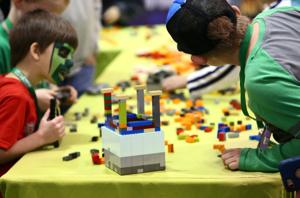This is pure play, creative experimentation, imaginative fun. The child is configuring a fresh and malleable world he’s only been in for a short time. That’s sacred originality! Loosen up your old imagination, stiff as your joints, Grandad, and plunge in! Other occasions teach the importance of forethought and planning, but not this one.
You’re playing Lego with a young grandson. The plan for this Lego house emerges. One move feeds forward into the next.

It’s like a jazz musician’s improvisation. There’s an idea, felt more than thought out. There are constraints imposed by the instrument (and with Lego, the law of gravity), but the music comes from a deeper place than mentality.
It feels right, it works. For a jazz musician and this little boy with his Lego, imagination is the architect. He is quiet, concentrating.
His world is organized around this Lego project. At first I praise him. “Good job! You’re building a great house!” Water off a duck’s back.
He’s too absorbed to hear me — or maybe he is wiser than I am. My glib praise would teach him to act for what others like and value, for external reward — praise today, money tomorrow. But now he is working because he loves it, finding satisfaction and fulfillment in the work itself.
He is learning to trust his internal sense of worth. Maybe I should just say, “I think I’d like to live in your house.” Lego building has lessons as well about how to handle collapse and catastrophe.
Why did that gre.
















